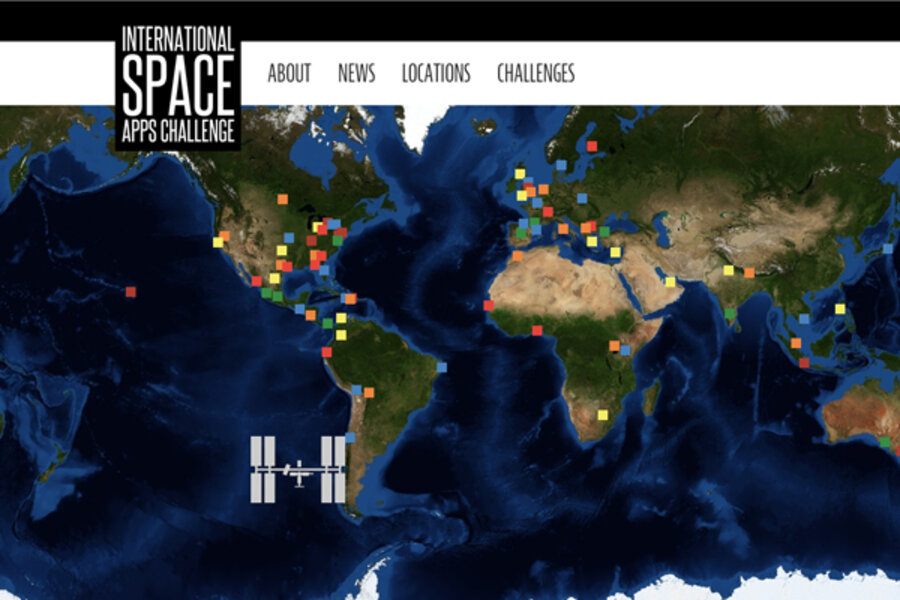NASA Space Apps Challenge aims for worldwide collaboration
Loading...
Thousands within the tech and space community from all over the world will meet up this weekend to create technological advancements to benefit life on Earth and in space.
NASA is hosting its second annual International Space Apps Challenge on April 20 and 21. The challenge will draw people from all seven continents as well as from space, according to the NASA website. There will be participants meeting at 50 local events and many others participating virtually.
The challenge has more than doubled in size since last year's event, which a NASA press release says had 2,000 participants.
There are 50 challenges participants can choose from in the 2013 event: 25 devised by NASA, and the other 25 suggested by the challenge's partners. Participants develop solutions in one of the four categories: software, hardware, data visualization, and citizen science. Nick Skytland, program manager for NASA's Open Innovation Program says part of what makes it interesting is the scale of the challenge.
“I firmly believe that NASA’s greatest potential will never be reached unless we reach people outside of our organization,” Mr. Skytland says.
The challenge brings the kind of diversity and talent that NASA needs, he says. They have brought together Sillicon Valley developers, rocket scientists, and 16-year-olds like Sam Wilkinson, who last year developed space bread.
Skytland says he was surprised by the high quality of the results in the first year.
"Usually when you have a mass collaboration or a hackathon like that … maybe 20 percent of them are usable during the weekend," he says. With last year's challenge, "maybe 80 percent [of the projects] were really high-quality solutions."
Among these was the mobile environment mapping app, a citizen-science project that uses geospatial data visualization so that users can post about any form of environmental degradation happening around them. That could include charcoal burning and plastic bag dumping. By mapping them, it would alert NGOs and CSOs so that they could take the necessary reverse measures.
Skytland says the project exemplifies how innovation can lead to advancements in government.
“We have been able to do this whole thing in spite of government, almost,” he says. “…I think it’s a real example of how ingenuity and entrepreneurship in government find a way to scale participation even when resources are limited.”
For more tech news, follow Steph on Twitter: @stephmsolis







